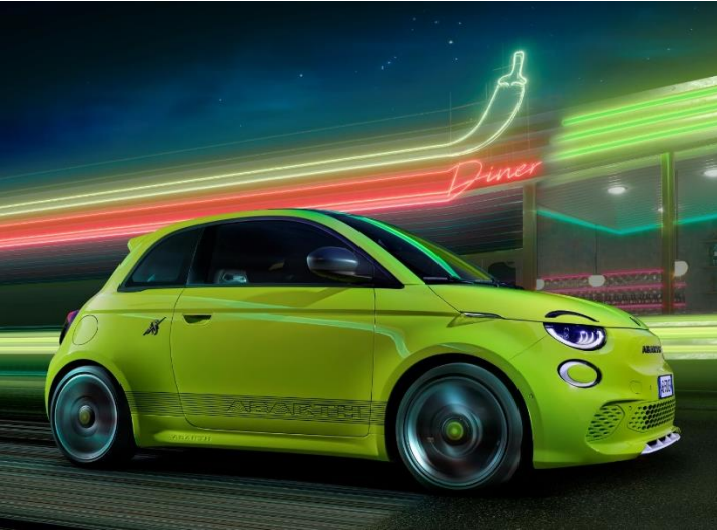Defying expectations, the Mazda MX-5 RF Retractable Fastback might just be an even better bet than the standard roadster model. Like that variant, it now gets a bit more handling cleverness
Background
It would have been incredibly easy for Mazda to ruin the MX-5 by putting a folding hard top roof on it. Just as well then that instead of rushing this concept to market, the Japanese company did a proper job on this car. It’s not just an MX-5 with a different roof. Mazda have managed to imbue the RF derivative with a more mature feel without losing the fun factor. The brand has now added in a new Kinematic Posture Control system for extra cornering stability.
Cars with folding hard top roofs can be rather grotty things. Curiously malformed with distended bottoms and pinched cabins, they usually lose their looks and their practicality once the roof’s up and all you’re left with is toothbrush room in the boot once the hood has done its contortionist’s trick. Oh yes, these cars offer the customer more. More weight, more complexity and more expense, that is. Therefore, we shuddered when Mazda first announced a ‘Retractable Fastback’ ‘RF’ version of its fourth generation MX-5. Seems we needn’t have worried after all. It’s the exception that proves the rule.
Utilising the basis of an existing MX-5, Mazda managed to build a car that will appeal to a subtly different audience. For many metropolitan types, parking on street is a way of life but the hard-topped RF variant offers additional security and is vandal-proofed in a manner that no fabric-roofed car can be. It’s also a little more refined than the soft-top model.
The Mazda MX-5 RF Driving Experience
The key update here is Mazda’s ‘KPC’ ‘Kinematic Posture Control’ system, designed to increase stability during cornering without impacting the purity of the MX-5’s handling and driver engagement. The KPC system applies a very small amount of brake force to the inner/unloaded rear wheel during cornering, the resulting brake force pulls the body down, suppressing body roll to provide more reassuring cornering so subtly that the MX-5’s engaging handling remains unpolluted.
Under the bonnet, this RF model gets the same two powerplants available in the standard MX-5. That means it’s offered with either a 1.5-litre 132PS engine or a 2.0-litre 184PS unit. As with the ordinary roadster variant, all models powered by the 2.0-litre 184PS engine feature a limited slip differential and 17-inch wheels. Top versions feature Bilstein dampers and a strut brace to further enhance their dynamic set up. This fourth generation MX-5 design conforms to five key criteria that Mazda claim define this model line – rear drive with a front-mid engine layout, 50/50 weight distribution and an eagerness to change direction, plus a low kerb weight and an affordable price. Most RF models get six-speed manual gearboxes but Mazda is also offering a paddleshift auto option at the top of the range for the few that want it.
As you would expect, the suspension and electric power steering parameters of the MX-5 have been specifically tuned for the Retractable Fastback version. In addition, a sound-absorbing headliner used in the front and middle roof panels combines with sound insulation around the rear wheel housings to deliver a significantly quieter cabin when the roof is closed. If you want to open the top, this can be done on the move at speeds of up to 6mph.
The Mazda MX-5 RF Design and Build
The MX-5 RF’s electrically retractable hardtop consists of front, middle and rear roof sections – and a rear screen. When the top is lowered, the front and middle portions are stowed together, while the rear glass sits behind the seats, leaving the rear roof section in place to create a unique open-topped look, plus a cabin feeling that combines a sense of open air freedom with the impression of being securely ensconced within the car.
A 5mm increase in roof height aside, the RF retains the same overall length, width and wheelbase as the standard MX-5 convertible, but thanks to gently downward-slopping buttresses that tuck in at the sides to create a teardrop shape, the RF’s elegant fastback silhouette accentuates the MX-5’s dynamic and contemporary sports car proportions in quite a unique way.
Otherwise, things are much as they are in any other MX-5. True to sportscar tradition, there’s a stitched leather-trimmed short-throw gearshift lever, with further premium leather on a grippy three-spoke steering wheel that looks and feels great but sadly, still only adjusts for height and not for reach. Through it, you view three satin chrome-ringed gauges, a large rev counter centrally positioned in pride of place.
Out back, there’s a tiny 127-litre boot, but at least the designers have kept the reduction on capacity over the normal fabric-topped model to just 3-litres.
The Mazda MX-5 RF Market and Model
There’s a premium of just under £2,000 to order this RF variant over the standard fabric-topped roadster model. That means pricing that starts at just under £27,000 for the entry-level ‘SE-L’ variant fitted with the base 1.5-litre 132PS engine. There’s a large £2,300 premium to pay on top of that if you want the better-equipped ‘Sport’ variant with its Bilstein dampers and a strut brace.
In the 2.0-litre RF line-up, prices start at just over £31,000 for ‘Sport Tech’ trim and you’re looking at having to find £1,500 more to upgrade to ‘GT Sport Tech’ spec. Both these top trim levels can be ordered with the £1,600 option of paddle shift auto transmission but by that time, you’ll be paying up to £34,000, which some might feel is a little too much for any MX-5. Options are limited to mica, metallic or pearlescent paint, plus on ‘Sport’ models, you can add in nappa leather trim and a ‘Safety Pack’ giving you High Beam Control and Blind Spot Monitoring with Rear Cross Traffic Alert.
The Cost of Owning a Mazda MX-5 RF
In contrast to the metal folding top ‘Roadster Coupe’ body style in the previous generation MX-5 range, this RF model’s top doesn’t add a significant amount of weight to this iconic little car. Which means that in this form, the MX-5 should cost you pretty much the same amount to run as the equivalent fabric-roofed variant. Let’s get specific with the WLTP figures. The 2.0-litre version most will choose will return a combined fuel consumption return of 40.9mpg and a CO2 reading of 155g/km. Or 37.2mpg and 171g/km for the 2.0-litre auto. If you go for the lesser 1.5-litre manual model, those figures improve to 44.8mpg and 142g/km. Insurance groupings start at 25E for the 1.5-litre model and run up to group 28E for the top 2.0-litre auto variant.
On to residual values, always a relative strongpoint with this car. Independent experts CAP reckon that after the usual three year/60,000 mile ownership period, this car will retain between 39 and 42% of its original value. To give you some perspective, a premium open-topped sportscar like, say, a BMW Z4 would give you between 33 and 34%. Yes, something like an Audi TT Roadster would do better, but its higher purchase price inevitably means that you’ll lose more money throughout your time of ownership. CAP forecasts suggest that over the regular three year period, the TT will lose over £19,000, well over £6,000 more than the value this MX-5 would shed. Makes you think doesn’t it?
Summary
The Mazda MX-5 is a tough car to improve upon but this Retractable Fastback version just about manages it, effectively offering added capability with – cost aside – almost no downside. With many MX-5 models down the years, the ethos was always less is more. The entry-level car was usually the best bet but the RF variant has changed that, offering a slightly more mature feel that rewards a bigger engine and more kit. As a result, this retractable hard-top version of the MX-5 has brought the car onto the radar of a new group of buyers.
Not everyone gets the MX-5 experience of course. It certainly won’t appeal to those prioritising power. Or people needing the practicality of a hot hatch or a sports coupe. At the other extreme, a specialist sportscar maker could offer you a more intense experience, though one that for the most part would be largely irrelevant for public road use. That’s where this Mazda excels. You don’t need a test track, a racing driver’s touch or a lottery winner’s wallet with this car. Just a back-to-basics love of driving. The way it ought to be. If you are interested in the Mazda MX-5 RF get in touch.





